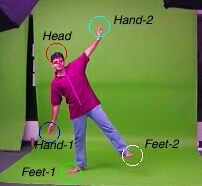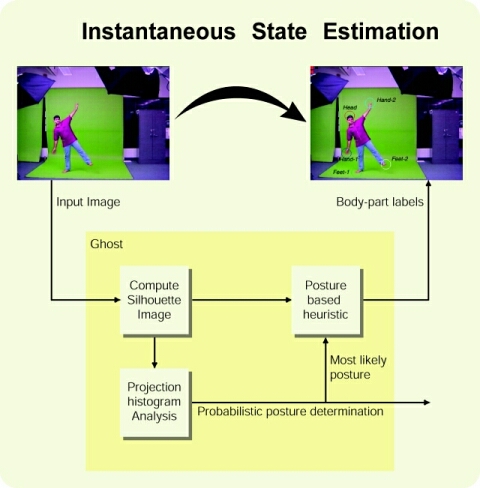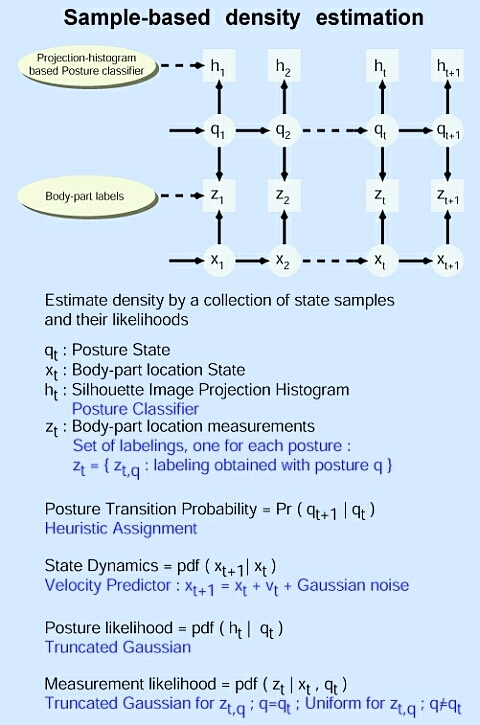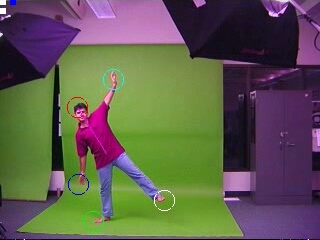
A
method for temporally integrating appearance-based body-part labelling
is presented. We begin by modifying the silhouette labelling
method of
Ghost
; that system first determines which posture best describes
the person currently and then uses posture-specific heuristics to generate
labels for head, hands, and feet. Our approach is to assign a posture
probability and then estimate body part locations for all possible postures.
Next we temporally integrate these estimates by finding a best path through
the posture-time lattice. A density-sampling propagation approach is
used that allows us to model the multiple hypotheses resulting from consideration
of different postures. We show quantitative and qualitative results
where the temporal integration solution improves the instantaneous estimates.
This method can be applied to any system that inherently has multiple
methods of asserting instantaneous properties but from which a temporally
coherent interpretation is desired.
Temporal Integration of Multiple Silhouette-based Body-part Hypotheses
Vivek Kwatra , Aaron F. Bobick and Amos Y. Johnson
Proc. IEEE Conference on Computer Vision and Pattern Recognition (CVPR 2001)
Paper | BibTex
- Estimation of human body-part locations from a video.
- Start from a silhouette-based instantaneous body-part labeling technique - Ghost , which first determines body posture and then applies a posture-based heuristic to determine body-part locations in each frame.
- Introduce a framework for temporal
integration of posture and body-part labels generated by Ghost
.

Our Approach:




Results:
Comparison videos:
Graphs:


